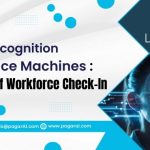Whether your workforce is in the office, remote, or hybrid, managing productivity and attendance is more challenging than ever.
Traditional tracking methods — like manual reports or basic timesheets — don’t give real-time, actionable insights. They only tell you when someone was logged in, not how effectively they worked.
AI employee tracking apps solve this by combining attendance monitoring, productivity analytics, and behavioral insights into a single, easy-to-use platform.
When integrated with AI attendance management systems and AI face recognition attendance machines, these apps provide a complete, data-driven view of workforce performance.
What is an AI Employee Tracking App?
It’s a mobile or desktop application that uses artificial intelligence to:
- Monitor attendance and work hours in real time
- Track app and website usage during work hours
- Analyze productivity trends
- Provide performance insights to managers
AI enables these apps to differentiate between productive and unproductive activity, making them far more advanced than basic tracking tools.
How AI Improves Employee Tracking ?
a. Automated Productivity Scoring
AI assigns productivity scores based on the nature of apps, websites, and tasks an employee engages with.
b. Intelligent Time Categorization
Instead of just tracking hours, AI categorizes time spent into productive, neutral, or unproductive activities.
c. Pattern Recognition
Identifies work habits and suggests changes to improve focus and efficiency.
d. Remote and Field Staff Compatibility
Supports GPS location tracking for employees working outside the office.
Benefits of AI Employee Tracking Apps ?
a. Boosts Accountability
Employees know their work hours and productivity are monitored, encouraging responsible behavior.
b. Improves Workforce Planning
Managers see workload distribution and can assign tasks more effectively.
c. Reduces Time Theft
Eliminates untracked breaks or misuse of work hours.
d. Integrates with Payroll & Attendance
Syncs with AI attendance management systems for accurate payroll processing.
Core AI Features to Look For :
- Automated activity tracking
- Face recognition or biometric logins for secure check-ins
- Customizable productivity metrics
- Employee self-reporting dashboards
- Alerts for unusual activity
Integration with Other AI Workforce Tools :
AI employee tracking apps work best when linked with:
- AI attendance systems → for accurate presence data
- AI productivity trackers → for detailed performance analysis
- Employee monitoring software → for compliance and behavior tracking
Industry Use Cases :
- Remote Teams → Track remote work hours and productivity levels
- Sales Teams → GPS tracking for field visits and client meetings
- IT Companies → Monitor project progress and coding hours
- Call Centers → Measure active talk time and idle time
Privacy & Compliance :
- Transparency is Key → Inform employees about what’s tracked and why
- Data Security → Encrypt activity logs and store securely
- Legal Compliance → Follow local labor laws and data protection regulations (GDPR, CCPA, etc.)
How AI Tracking Improves Productivity ?
AI doesn’t just track work — it helps optimize work.
- Highlights top-performing employees
- Identifies time-wasting patterns
- Recommends workload redistribution
Future of AI Employee Tracking Apps :
- Emotion AI → Detect burnout or disengagement through behavioral patterns
- Integration with AI Chatbots → Instant productivity coaching
- Voice Commands → Hands-free productivity logging
FAQ
Q1: Do AI tracking apps work offline?
Yes — they store logs locally and sync when back online.
Q2: Are they intrusive?
No — they monitor work-related activities and respect privacy settings.
Q3: Can employees see their own productivity reports?
Yes — many AI tracking apps provide self-access dashboards.
Conclusion
AI employee tracking apps are transforming the way businesses monitor productivity and attendance.
By combining them with AI attendance systems, AI face recognition machines, and AI workforce management platforms, companies can build a complete, accurate, and performance-focused workforce management ecosystem.
It’s not just about tracking hours — it’s about maximizing efficiency, promoting accountability, and building a high-performance work culture.



